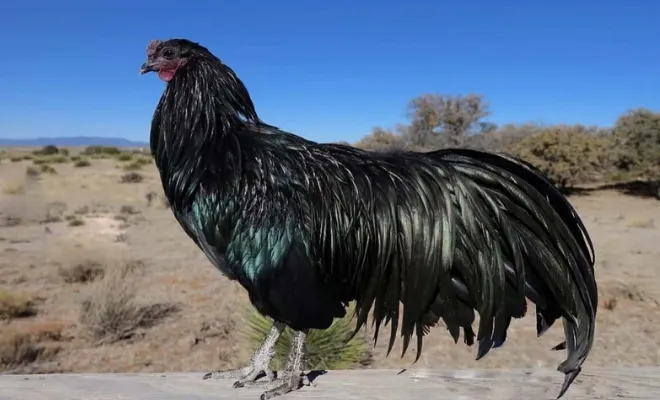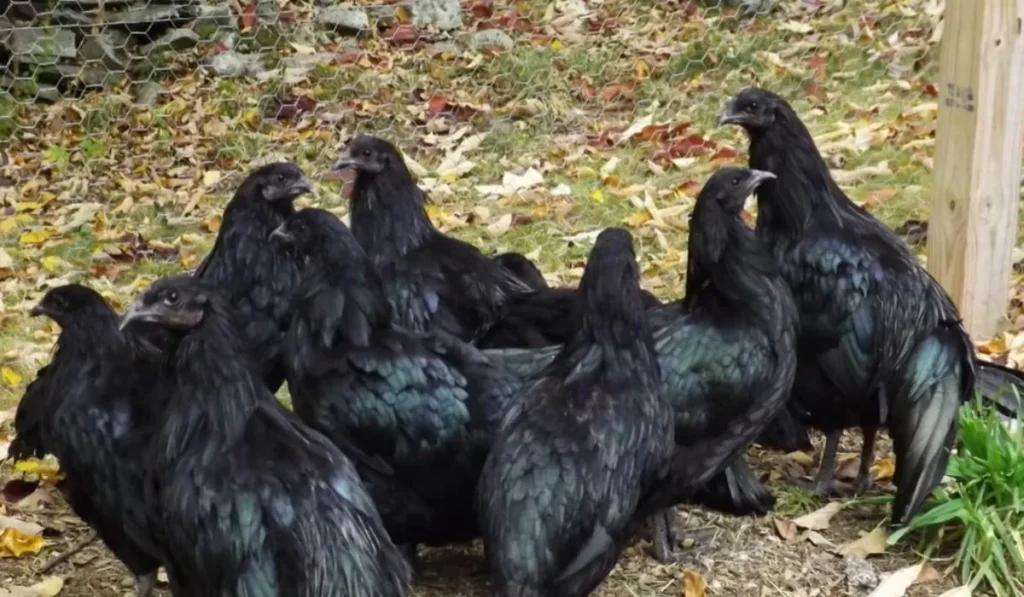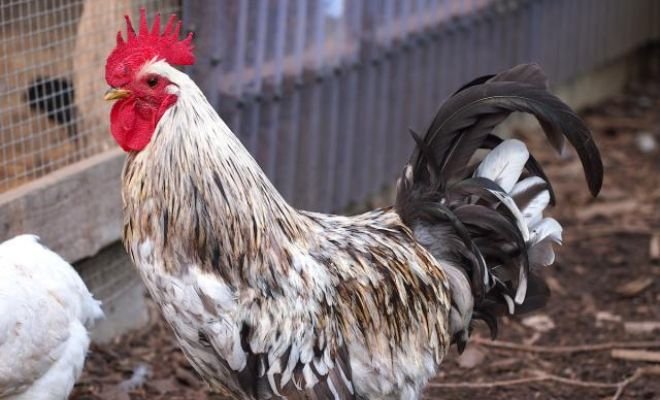The Cost of Sumatra Chickens: Are they expensive to keep?

Imagine a chicken that looks like a magical phoenix and acts as brave as a dragon. That’s the Sumatra chickens! A special kind from the beautiful island of Sumatra in Indonesia. These chickens aren’t just pretty; they have a cool history and interesting personalities.
Whether you love chickens or are just curious about different kinds, Sumatra chickens are super interesting. You can find out where they come from and how they became so popular. And guess what? They’re great at finding food and might even protect other animals!
This article will share this breed with traits! Learn to know if they’re perfect for your backyard!
Table of Contents
Sumatra Chickens – A Short Breed Profile

Sumatra chickens have something interesting that brings you here. To know about them, here’s a short profile of the breed –
| Feature | Description |
|---|---|
| Origin | Island of Sumatra, Indonesia |
| Size | Roosters: 2.25-2.70 kg |
| Hens: 1.80 kg | |
| Temperament | Active, alert, can be flighty and wary of strangers |
| Egg Laying | Poor layers |
| Meat Production | Not bred for meat, but lean and flavorful |
| Climate Tolerance | Heat-tolerant, adaptable to most climates with proper care |
| Special Needs | Large, secure enclosure with high fencing due to good flying ability |
| Lifespan | 15-20 years with proper care |
History and Location: What is the Origin of Sumatra chickens?
The Sumatra chickens are originally from the islands of Sumatra, Java, and Borneo in Indonesia. They were once wild and might have influenced many current breeds.
These special jungle fowl birds lived freely, learning how to survive and becoming unique. Their long tails and strong wings helped them fly through the dense forests, and their shiny green feathers helped them blend in.
From Jungle to Everywhere
Fast forward to the mid-19th century, and these amazing birds caught the attention of explorers from the West. In 1847, the first Sumatra chickens traveled to Europe and the United States, ready for a new adventure.
At first, people liked them for fighting, but soon they became famous for their looks and personality.
Physical Appearance of the Sumatra Chicken Breed

Sumatra chickens look great with their beauty. But do they look the same? Or what are the differences between male vs female Sumatra chickens?
Male Sumatra Chicken
- Color: Mostly a deep black with a stunning green sheen, also comes in blue and white varieties.
- Size: Small and muscular, roosters weigh around 5 lbs but appear larger due to feathers.
- Comb: Tiny pea comb, bright red.
- Wattles and Earlobes: Almost non-existent, small, and close-fitting.
- Tail: Long and flowing, often trailing on the ground, with abundant sickles and coverts.
- Spurs: Unique feature! Often have multiple spurs on each leg, sometimes up to three.
Female Sumatra Chicken
- Color: Mostly deep black with green sheen or other recognized varieties.
- Size: Slightly smaller than males, hens weigh around 4 lbs.
- Comb, Wattles, Earlobes: Similar to males, small and close-fitting.
- Tail: Shorter than males, but still flowing and elegant.
- Spurs: Females don’t have spurs.
Similar Traits for Both
- Body: Long and lean, muscular build.
- Eyes: Large and bright, alert and energetic expression.
- Beak: Strong and slightly curved, medium length.
- Skin and Bones: Black, unique among chicken breeds.
- Shanks: Black with yellow soles.
- Temperament: Active and flighty, good foragers but not always friendly.
Wild at Heart: 6 Personality of the Sumatra Chicken
Sumatra chickens aren’t your average backyard flock members. Their personalities reflect their wild jungle origins, making them fascinating but not always suitable for beginners.
1. Alert and Active
They always keep an eye out, they’re excellent foragers and quick to take flight when spooked. Think “mini jungle explorer” rather than a cuddly coop companion.
2. Independent Spirits
Not known for being lap chickens, they prefer to roam and explore on their own terms. Socialization from an early age can help build trust. But don’t expect them to be overly friendly.
3. Flighty and Nervous
Their wild instincts translate to skittishness around humans and sudden movements. Provide ample hiding places and a calm environment to minimize stress.
4. Good Mothers, Broody Hens
Despite their flighty nature, hens make dedicated mothers when broody. They readily protect their chicks and are known for good mothering instincts.
5. Unique Roosters
Can be quite territorial and aggressive towards other roosters. Multiple spurs add to their impressive but potentially combative presence.
6. Not for Everyone
While stunningly beautiful, their personality traits may not suit everyone. Experienced chicken keepers comfortable with flighty birds will appreciate their unique nature.
Take a look at this video of this unique breed –
Reproduction and Breeding of Sumatra Chickens
If you really care about keeping this special kind of chicken safe, and you know a lot about taking care of them, you should think about learning even more. Try doing more research and talking to good breeders who know a lot about them. Then you can go for breeding.
When does the Sumatra chicken start breeding session? Sumatra chickens can breed year-round, but their peak activity occurs in spring and summer.
How long does it take for Sumatra chickens to hatch? Eggs typically hatch after 21 days of incubation. It’s almost the same for all the duck breeds.
How to breed Sumatra chickens? Sumatra chickens have a unique and sometimes flighty nature. So, it’s recommended to leave natural mating to the chickens themselves. However, responsible breeding should only be undertaken with proper knowledge and experience.
How many eggs do the Sumatra chickens lay? They are not prolific layers, averaging 80-120 small, cream-colored eggs per year.
Which color eggs do Sumatra chickens lay? Their eggs are consistently white or cream-colored.
What Purposes Does Sumatra Chickens Breed Serve the Best?

While Sumatra chickens are fascinating birds with unique qualities, they aren’t ideal for every purpose. Here’s a breakdown of where they shine and where other breeds might be a better fit:
Better Purposes
- Conservation: If you’re passionate about preserving rare breeds, raising Sumatras contributes to maintaining their population.
- Foraging: Their active, independent nature makes them excellent foragers, ideal for free-range setups where they can explore and find their own food.
- Pest Control: Their active nature and keen eyesight can help control insects and small pests in your yard.
- Unique Beauty: They are undeniably stunning birds with a striking appearance, adding a touch of exotic elegance to your flock. Call them a perfect backyard beauty bird!
Considerable Facts
- Game Fowl: While Sumatra chickens were historically promoted as fighting birds, it’s important to understand that this practice is no longer ethical or accepted.
- Egg Production: They are not prolific layers, so if you primarily want eggs, breeds like Leghorns or Rhode Island Reds would be a better choice.
- Temperament: Their flighty and skittish nature makes them less suitable for handling or cuddling compared to friendlier breeds.
- Experience Level: They can be challenging for beginners due to their active and sometimes nervous personalities. Experienced chicken keepers comfortable with independent birds will appreciate their unique nature.
How to Raise the Sumatra Chickens?
Breeding Sumatra chickens requires responsible planning and care. Steps include:
- Get active chickens from reputable sources.
- Provide a spacious, secure coop with proper ventilation.
- Offer balanced feed, supplement with foraging opportunities.
- Introduce rooster in spring, and observe mating behavior.
- Mark eggs, use an incubator, or let hens incubate.
- Provide warmth, chick feed, clean water, and socialization.
- Consider selling surplus or simply enjoy your unique flock.
What Are the Pros And Cons of Sumatra Chickens?
Sumatra chickens can be a rewarding addition. But you need to know about their good and bad facts.
Pros of Sumatra Chickens
- Standout black plumage with a green sheen
- Excellent foragers
- Conservation contribution
- Unique personality
Cons of Sumatra Chickens
- Not prolific layers
- Skittish and nervous
- Require experienced care
- Breeding challenges
Are Sumatra Chickens Expensive?
Sumatra chickens can be considered expensive compared to common chicken breeds, but their price range varies depending on several factors:
Factors Impacting Price
- Age: Chicks typically cost less than adults.
- Sex: Hens generally cost less than roosters.
- Lineage and Breeder: Reputable breeders with high-quality stock may charge more.
- Color Variety: Rare color varieties like blue Sumatras may command higher prices.
- Location: Prices can vary based on geographic location and breeder availability.
Estimated Price Range
- Chicks: $20-$50 each
- Adults: $50-$200 each
Compared to other breeds:
- Standard breeds: Leghorns or Rhode Island Reds might cost $5-$20 per chick.
- Rare breeds: Some rare heritage breeds can be even more expensive than Sumatras.
Related Articles:
- 5 Reasons Why You Should Raise Welsummer Chickens!
- Are Yokohama Chickens Right for You
- History and Location of the Easter Egger Chickens
FAQs
You can take a look at the related queries about the Sumatra chicken breed.
Q. Are Black Sumatra Chickens rare?
Black Sumatra chickens are not as rare as some other heritage breeds. But they are less common than commercially popular options.
Q. What colors do Sumatra chickens come in?
Primarily Sumatra chickens are black with a green sheen. But you may also find blue Sumatra chicken or white Sumatras as well.
Q. How much space does Sumatran need?
Provide at least 4 square feet per bird in the coop. Also, they need ample outdoor space for roaming and exploring.
Q. Are there any health issues that are common in Sumatra Chickens?
Fortunately, Sumatra chickens don’t have any major breed-specific health concerns. However, like any chicken breed, they are susceptible to common poultry illnesses.
Final Word
Sumatra chickens are truly captivating! They come from Sumatra Island and have a fascinating history. With their beautiful black feathers and adventurous spirit, they’re unlike any other chickens.
Even though they don’t lay many eggs and need careful attention, they’re worth it. Their beauty and role in conservation efforts make them special. Whether you’re a chicken expert or new to raising them, having Sumatra chickens can be a wonderful adventure. So, why not bring some of their exotic charm to your backyard?






